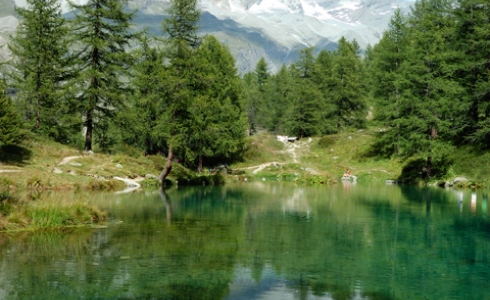

 Wine for Roast?
Wine for Roast?
We've found 158 wine(s) in our Italian Wine Guide which are good for Roast.
Read more

Most tourists who have visited Valle d’Aosta (Aosta Valley), have probably never given the region’s name or wines a second thought. Here it’s about skiing on the dramatic slopes around Breuil-Cervinia, at the base of the gigantic mountain, Matterhorn. But the region offers exciting things to do in the après-ski department.
As it’s situated, pressed into the northwestern corner with Piemonte to the south, the northern mountainous border towards Switzerland and northwest towards France, Valle d’Aosta is Italy’s smallest region. On the production side, the region is also in the Little Leagues, as it only produces about 1.2 million bottles a year, the most of which are consumed within the region’s own borders.
Wine cultivation has been practiced here since the Romans, and maybe even earlier by the Celtic tribe, Salassi. In 1947, Valle d’Aosta received autonomy in Italy, but until then it had very strong ties to both France and Switzerland. For the same reason, the region has two official languages: Italian and French.
Valle d'Aosta can boast Europe’s highest vineyards with Morgex, but funnily enough, the average height for its vineyards is among the lowest in Northern Italy. The Alps close proximity gives a cool, continental climate, and at the same time the mountains provide protection against the strong winds. The south-facing slopes down by the Dora Baltea river are thus perfectly suited for wine cultivation, despite their location at approx. 4300 feet above sea level.
In an eternal struggle against the massive Alps, wine is cultivated on pergolas (probably for primarily aesthetic and nostalgic reasons) and on terraces. There are more than 400 registered wine growers, of which many only cultivate wine part-time, as the vineyards are very small.
The wine, Donnas, became Valle d’Aosta’s first DOC, and Enfer d’Arvier followed the year after. The DOC regulations changed in 1985, and today there is only one DOC in the region, Valle d’Aosta DOC.
The most interesting wines come in roughly 3 types: 1) The drier white wines from the heights of Morgex et La Salle, from 3000-4300 feet above sea level, 2) The Petit Rouge-based red wines from the central zone, Chambave to Enfer d’Arvier, at approx. 1600-2300 feet above sea level and 3) the Nebbiolo-based red wines from Arnad-Montjovet and Donnas, at about 1000-1300 feet above sea level.
As in Trentino-Alto Adige, the names on the label are in two languages: French and Italian, and there are absolutely interesting wines to look for. One method is to follow the wine route, ’Route de Vins’. Another, simpler method is to visit the wine store, 'Cave Valdotaine', in Aosta.
Read more about the wines from Valle d'Aosta by clicking i the top menu in the right side.
Italy extends over 10 latitudes – from continental climate to subtropical climate?